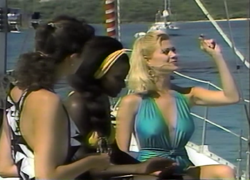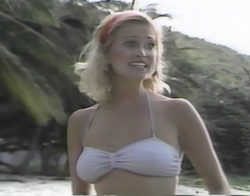
 Real-life not-twin sisters Audrey and Judy Landers play respective twin sisters Polly and Ruth Morrison in Deadly Trigger. It also features special guest star from Das Boot, Jan Fedder. Mind you, that’s how the actual movie actually credits him in its actual opening moments, which is one of your first signs that something about this double-vanity project is … off. Another tell is that a script credit is nowhere to be found.
Real-life not-twin sisters Audrey and Judy Landers play respective twin sisters Polly and Ruth Morrison in Deadly Trigger. It also features special guest star from Das Boot, Jan Fedder. Mind you, that’s how the actual movie actually credits him in its actual opening moments, which is one of your first signs that something about this double-vanity project is … off. Another tell is that a script credit is nowhere to be found.
Many more red flags unfurl; please be patient.
No sooner are happy, sexy sisters Polly and Ruth picnicking in a New York park and talking about moving to Germany to work in a bank and take pictures, respectively, and — bam — they’re in Germany and wearing sparkly dresses and singing in a local nightclub, allowing for music numbers that you just know the Landerses had written into their contract. One night, the girls are attacked in a parking garage, have their shirts ripped off and are raped, all at the behest of laughing thug Harry DeRomeo (aforementioned special guest from Das Boot, Jan Fedder) and his coke fingernail. Making this all the more is tragic is that Ruth, three months pregnant, miscarries and tries to kill herself by jumping out the hospital window. In the fall, Ruth is paralyzed, confined to a wheelchair and presumably testing the bonds of sisterly love by putting Polly on wiping duty.
 Alternately known as Deadly Twins, the movie then becomes a rape-revenger — or at least once-and-only-once director/producer Joe Oaks’ approximation of the exploitation staple. Polly teams with a police detective to frame DeRomeo for stealing a cash payroll from a steel mill. Their plan does not make sense, but does DeRomeo flee, kidnap a kid at gunpoint and shout “It’s April Fools’ Day, guys. Off with your pants! Off!” at two cops? He does.
Alternately known as Deadly Twins, the movie then becomes a rape-revenger — or at least once-and-only-once director/producer Joe Oaks’ approximation of the exploitation staple. Polly teams with a police detective to frame DeRomeo for stealing a cash payroll from a steel mill. Their plan does not make sense, but does DeRomeo flee, kidnap a kid at gunpoint and shout “It’s April Fools’ Day, guys. Off with your pants! Off!” at two cops? He does.
Does he chase an army man with a bulldozer? Yes.
Is said army man outwitted by said bulldozer and deposited into a lake? Most certainly.
Will you see DeRomeo duke it out with a guy while going through an automatic car wash? You will, but don’t get your hopes up — Oaks did not spend the extra two bucks for a spritz of tire sheen.
 In fact, despite Deadly Twins being shot on video, Oaks somehow didn’t spring for recorded sound. This entire enterprise in VHS Eurotrash is not only dubbed, but dubbed very, very poorly, digging to a level of incompetence that is nearly indescribable.
In fact, despite Deadly Twins being shot on video, Oaks somehow didn’t spring for recorded sound. This entire enterprise in VHS Eurotrash is not only dubbed, but dubbed very, very poorly, digging to a level of incompetence that is nearly indescribable.
But I’ll try: It’s as if Oaks had never seen a movie before, and only had heard about the concept in passing, yet decided to give it the ol’ community-college try. Then he either forgot to mic everybody or accidentally erased the soundtrack while playing with a RadioShack magnet kit too close to the camera. Thus, he was forced to re-create all the audio, but by then, everyone long had thrown away the script, so they went off memory, but everyone had received at least two concussions in the interim.
You have no idea how close that explanation is.
Lovely and talented, the Landers sisters were TV mainstays in the late 1970s and early ’80s — prime time to be a vital part of my pre- to pubescent dreams. I was partial to Judy (Hellhole) purely for curvaceous reasons, but Audrey (Bachelor Party 2: The Last Temptation) is the better actress, which may be why she gets the lion’s share of screen time. However, their infamous Playboy spread from 1983 exhibits more life than either sibling does here.
Where was Andy Sidaris when the Landers sisters — and the world — needed him? —Rod Lott


 Thanks to Something Weird Video, all but 25 minutes of the once-lost
Thanks to Something Weird Video, all but 25 minutes of the once-lost 
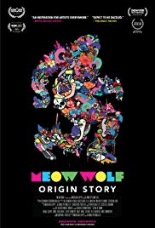
 When the Santa Fe renegade art collective known as Meow Wolf opened the doors to its immersive funhouse in 2016, one of its key creatives worried that visitors might write the permanent installation off as “a bunch of fuckin’ masturbatory bullshit.” Obviously, the public did not, or the documentary
When the Santa Fe renegade art collective known as Meow Wolf opened the doors to its immersive funhouse in 2016, one of its key creatives worried that visitors might write the permanent installation off as “a bunch of fuckin’ masturbatory bullshit.” Obviously, the public did not, or the documentary 

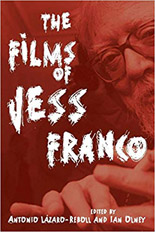
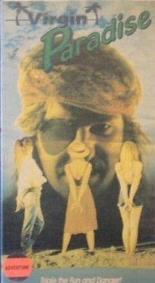
 Okay, okay — yes, I admit it: The only reason I watched
Okay, okay — yes, I admit it: The only reason I watched 